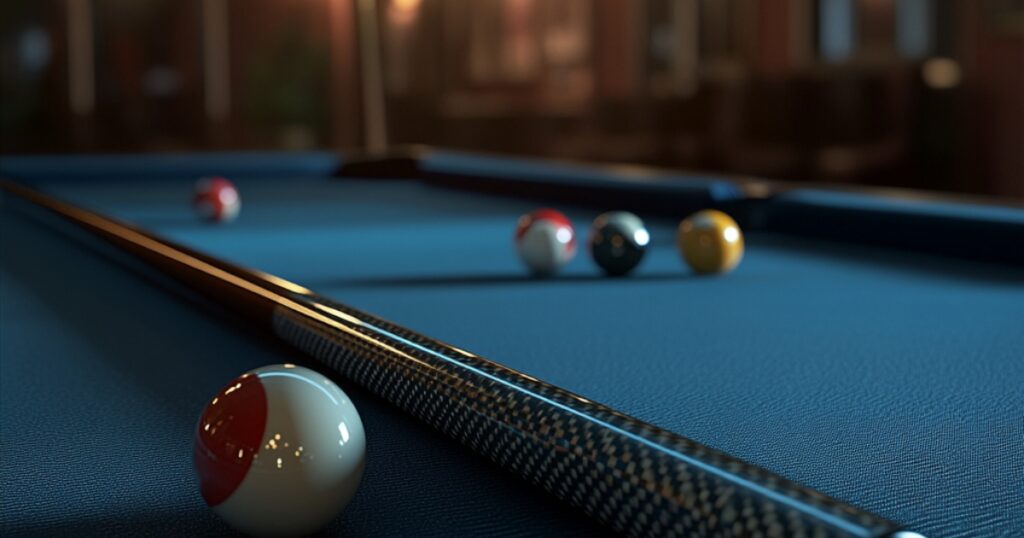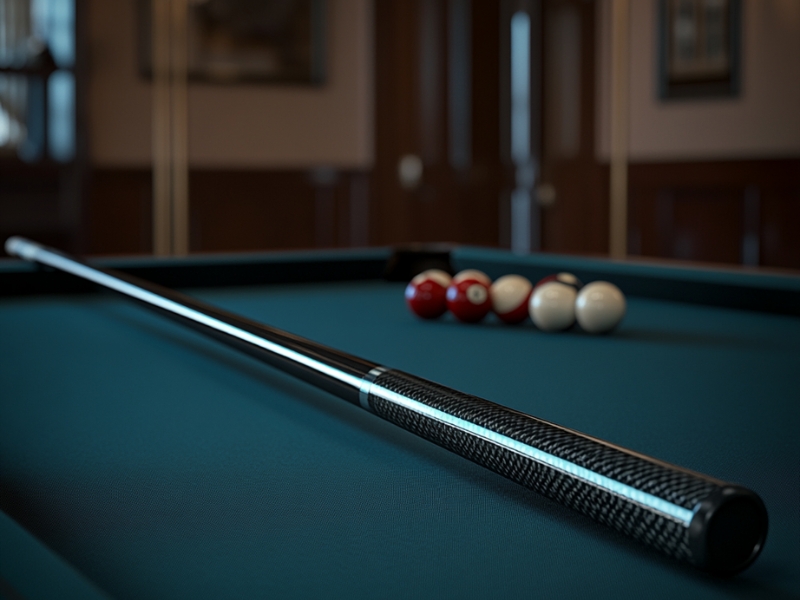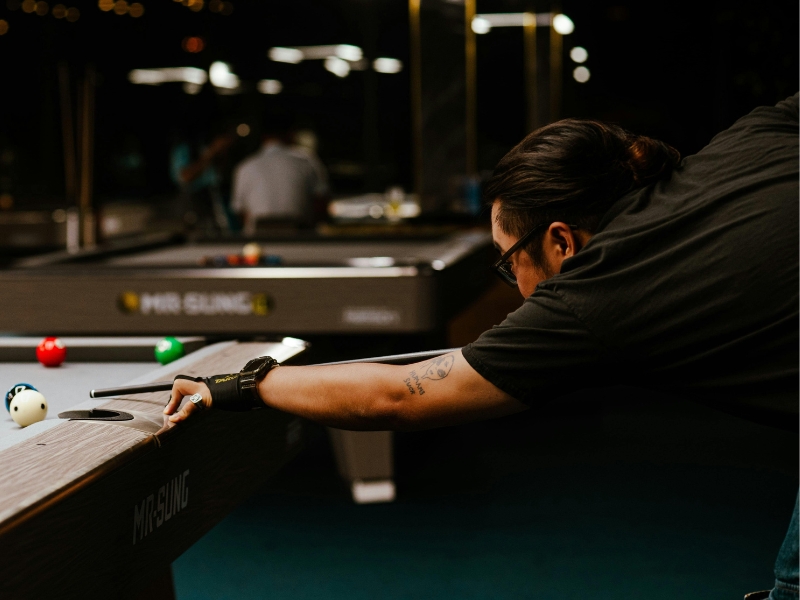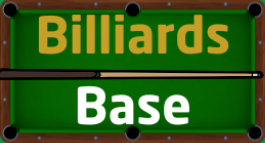The pool cue is an essential tool for billiards. Without it, we wouldn’t be able to make the balls go KLAK.
To most, a pool cue is just there. It just is. But perhaps you like to consider the deeper meaning of things.
OK, it’s a pool cue. But what IS a pool cue?
Is it the wand of opportunity, assisting us as we strike towards a better tomorrow?
Are they just bits of wood fashioned together?
Let’s deconstruct pool cues and figure this out.
What Is a Pool Cue?

A pool cue is a stick that is used to strike the cue ball in pool, snooker, and other billiards games. The pool cue standard length is 57-58 inches, with a weight typically between 18-21 ounces.
Pool cues have a tapered, cylindrical design, which contributes to precision when it’s used for a shot, as well as other elements of your game.
If you were playing a game of pool in the 15th century, you’d have been using a mace stick. The cue was adapted over the years to suit various cue sports, and made generally from better-sourced materials with more refined craftmaking practices.
Anatomy of a Pool Cue
1. The Tip
The tip of a pool cue is usually made out of either soft or hard leather. It’s purpose is to strike the cue ball, making the design of the tip crucial for spin and accuracy. You should shape the pool cue tip after around 10-15 hours of play time to maintain performance. You should also expect to replace the pool cue tip every 6-12 months.
2. The Ferrule
The pool cue’s ferrule is typically made of plastic or fiber. The idea behind ferrule is for it to protect the shaft from splitting and absorbing impact during shots.
3. The Shaft
The pool cue shaft was traditionally made of wood, but is now also made out of carbon fiber. The shaft is the long, tapered portion of the cue that offers you grip and makes it possible for you to take your shot.
The difference of material can be felt in your shots, and the type of material that’s right for you depends upon how precise your shots need to be at your current level.
4. The Joint
The pool cue joint is usually made of stainless steel, plastic, or wood. It is used to connect the shaft and butt, allowing for disassembly whenever modifications need to be made.
5. The Butt
The pool cue butt provides weight and balance in your shots. The butt can make or break how comfortable your pool cue is to shoot with. Butts are often made of decorative wood or composite materials.
Types of Pool Cues

1. Standard Cues
Standard cues are one-piecers typically found in your local pool halls. These cues are best for beginner or casual players, but there have been professional players over the years known for getting far solely on a standard cue.
2. Two-Piece Cues
Two-piece cues are detachable, giving you greater portability if you’re a player that frequently travels. These are often for more serious players optimizing for customization and convenience.
3. Specialty Cues
Specialty cues would include break cues (designed for powerful breaks), jump cues (lighter, shorter cues for jumping shots), and snooker cues (thinner shafts for snooker gameplay).
Materials Used in Pool Cues
1. Wood
- Common Types: Maple and ash.
- Pros: Classic feel, traditional look.
- Cons: Requires maintenance and is sensitive to environmental factors.
Maple and ash are the most common types of materials used for wooden cues. They offer a classic feel and traditional look. Unfortunately, these cues require maintenance and are sensitive to environmental factors.
You’ve probably seen the bog-standard cue at your local pool hall that’s completely weathered and out of the game – that’s what happens when there’s no maintenance on a wooden cue.
2. Carbon Fiber
Carbon fiber cues are newcomers to the market, but are making waves in the community. Carbon fiber cues are durable, consistent, and resistant to warping, giving them greater longevity over their wooden counterparts.
However, carbon fiber cues can be expensive and offer a different feel that some players dislike.
You Might Like: Are Carbon Fiber Cues Worth the Hype?
3. Composite Materials
Some specialty cues can be made out of composite materials for an affordable-yet-durable option. However, these cues often lack the premium feel of wood or carbon fiber and are basically not recommended to anyone.
Choosing the Right Pool Cue for You
1. Skill Level
Your skill level will impact the type of pool cue you should go for. If you’re a beginner, a standard cue or affordable two-piece option would be recommended. If you’re an advanced player, it might be time to start considering a customizable cue.
2. Budget
Budget, unfortunately, will impact the type of cue you can get. Here’s the general range:
- Affordable: $50-150
- Mid range: $150-500
- High end: $500+
3. Game Type
The type of game you’re playing also affects which cue to shoot for, or with.
- Pool: A standard cue
- Snooker: A slimmer, longer cue
- Specialty games: Break or jump cues
Caring for Your Pool Cue

1. Cleaning
Wipe down the shaft of your pool cue after every session to remove chalk and debris. If you’re looking to do a deep clean (less often), use cue-specific cleaning products to bring that polish and shine back.
2. Storage
Store your pool cue in a cue case to prevent warping and protect against environmental factors.
Take care to avoid exposing your cue to excessive heat or humidity, as depending on the quality of the wood it could quickly warp.
3. Regular Maintenance
Check the tip of your pool cue every so often and make sure to replace it when it becomes worn. If you’re looking for maximum precision in your shotmaking, periodically sand or shape the tip to keep your shots sharp.
Understanding Pool Cues
Pool cues are a hugely important aspect of billiards, so it’s crucial you understand them. Who knows, maybe they really are your wand of opportunity, if they carry you to the professional leagues.
FAQs About Pool Cues
What is the difference between a pool cue and a snooker cue?
- Pool cues are thicker and shorter, while snooker cues are slimmer and longer to handle smaller balls and tighter pockets.
Do pool cues come in different sizes?
- Yes, standard cues are 57–58 inches, but shorter and longer options are available for kids or taller players.
How much should I spend on my first pool cue?
- Beginners should aim for a cue in the $50–$150 range to balance quality and affordability.
